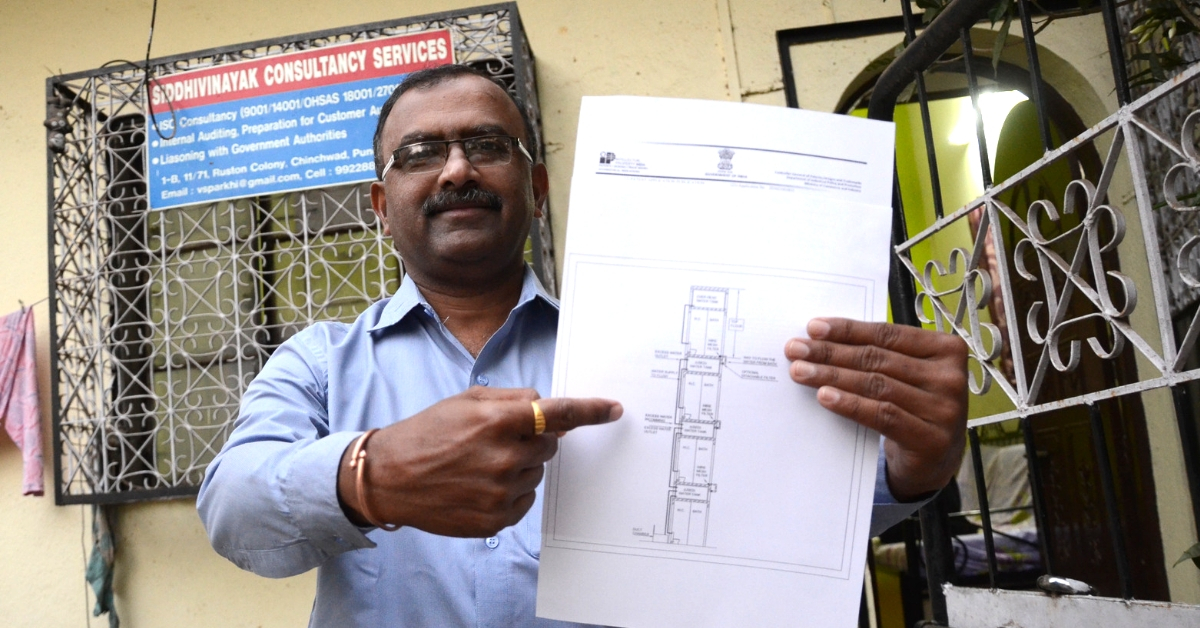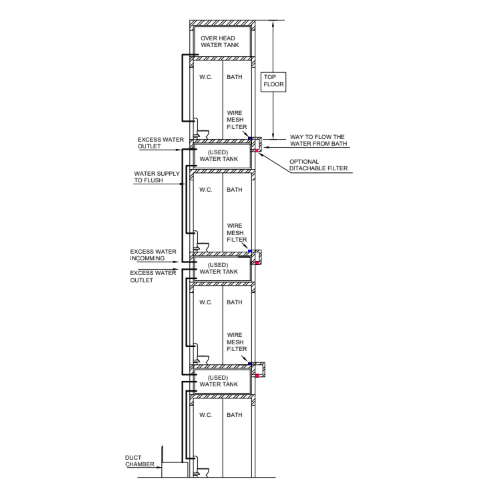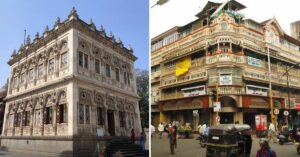Pune Man Wins Patent for Brilliant Model That Can Recycle 20% Water in Apartments!
The best part? Vinayak Parkhi's economical model needs no electricity or any kind of pump, and can be fitted by any plumber easily! #SaveWater #GreenIndia #Innovation

With summer approaching, the city of Pune is getting ready for dry taps. The parched fields in the many villages that dot the outskirts of the city stand testimony to the blazing hot months ahead. What feeds the water crisis monster is the lack of initiative among the urban populace for water conservation methods. Despite knowing about the many ways one can save water, only a few enterprising souls in the city actually take the necessary steps.
Pained at the hundreds of litres of water going down the drains, Vinayak Parkhi, a consultant with the International Organisation for Standardization (ISO) worked to find solutions to such malpractices.
He eventually developed a model that can save about 20 per cent of the water used in any multi-storeyed building.
The model uses the principles of recycling and reducing to make optimum use of water. The Better India spoke to Parkhi to find more about his model. “We are all too aware of the water shortage in Pune and other parts of India. And even in this scarcity, we don’t recycle water. Instead, we use fresh water for everything from cooking to flushing. Generally, every urban house requires about 750 litres of water every day. Out of this, 300 litres of water is used for bathing and washing clothes, 200 litres for flushing, 150 litres for cooking and drinking while another 100 litres for other uses,” he said.
Parkhi’s patented model directs waste water from washing and bathing to the flush tanks.

How does the model work?
“Say the apartment has five storeys. The model directs the water used in a bathroom in the topmost floor through a pipe to the flush tanks on the fourth floor. A sink strainer with fine holes similar to those you use in the kitchen will be fixed in the bathroom to filter all the solids from the water. This method can recycle around 300 litres of water—an amount a nuclear family utilises daily. We can recycle water used by everyone but the ground floor,” says the 49-year-old.
While speaking to his friends in the Marathwada region in Maharashtra which frequently faces severe droughts, Parkhi was propelled to do something. He wondered how people living in urban areas could take the water running from their taps for granted when farmers are starving due to its scarcity.
And so, the ISO auditor started working on designs that could recycle some portion of the water used every day. After days of research and trial and error, he zeroed in on a system where the recycled water does not have to be touched by any living being.
“The implementation of this system requires minor alterations to your drainage system. Any plumber can help you with it.

Firstly, the flat above yours needs to replace their wide holed drainage sieves that allow hair and small solid particles to flow through. These have to be replaced with one with much finer holes. A tank of about 500 litres of capacity needs to be installed above your toilet to store the water that passes through the upper drainage. The entire system should cost you about Rs 6000, including service charges, but you are saving hundreds of litres of precious water,” he tells TBI.
Without the use of electricity or pumps, the model uses only the gravitational force to function and hence, is equally environment-friendly and economical.
You may also like: 20-YO Farmer’s Son Is Using Fruit Peels to Help Rajasthan Beat Water Scarcity!
One concern is a slightly increased risk of infection among those who are especially susceptible due to various medical reasons. But this does not apply to the general population. Specific precautionary measures can be taken before the implementation of the system.
Treatment of the wastewater is costly, and models like these will reduce the amount of water let out into rivers and lakes.

Cities like Pune are already dealing with water scarcity. The city, which requires about 17 Thousand Million Cubic Feet (TMC) of water is currently issued only 11 TMC of water quota.
Parkhi hopes that Pune Municipal Corporation takes note of this system and make its implementation mandatory in old buildings. Since the design is relatively new, it has not been implemented in any building as of yet. However, the innovator hopes that housing societies go for the plan collectively and save the water going down their drains daily.
You may also like: This Simple Plan by Punekars Can Save 1600 Cr Litres of Water in 3 Years. Here’s How
We hear about campaigns and initiatives trying to save water—commendable work no doubt—yet the lack of enterprise among the urban as well as rural residents nip water conservation drives in the bud.
Countries like Israel are recycling about 90 per cent of their wastewater. Perhaps we too can incorporate such initiatives to recycle one-fifth of the water that we use at home to flush our toilets. Although the system is not entirely flawless, it is a step toward cost-effective methods to recycle 20 per cent of wastewater in urban apartments.
(Edited by Saiqua Sultan)
Like this story? Or have something to share? Write to us: [email protected], or connect with us on Facebook and Twitter.
NEW: Click here to get positive news on WhatsApp!
This story made me
- 97
- 121
- 89
- 167
Tell Us More
We bring stories straight from the heart of India, to inspire millions and create a wave of impact. Our positive movement is growing bigger everyday, and we would love for you to join it.
Please contribute whatever you can, every little penny helps our team in bringing you more stories that support dreams and spread hope.



















